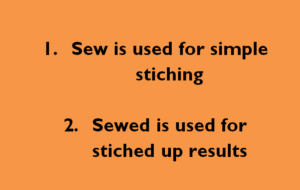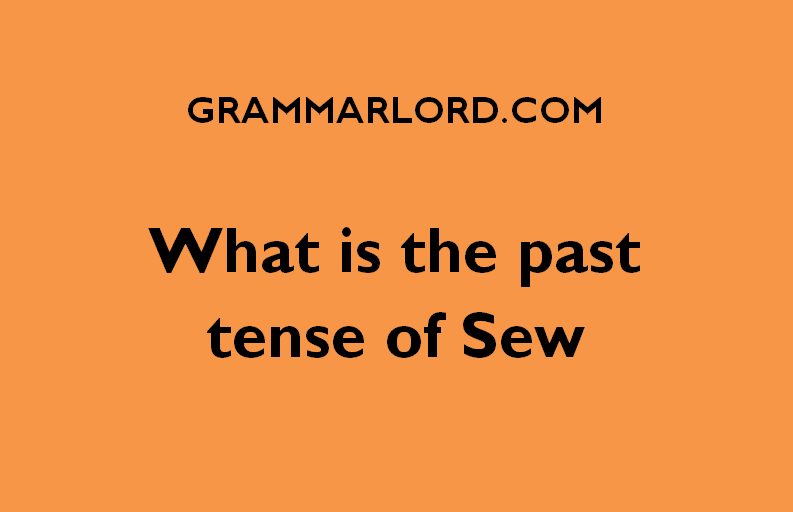Sometimes, all we can remember is the soothing rhythm of the needle, and not the right word to use when we want to talk about the magic of transforming fabric into wearable art.
It’s very okay, even a seasoned stitcher can get amid this confusion. But, what in the world is the past tense of “sew”? First things first, “sew” isn’t one of those boring, predictable verbs that just take a “-d” at the end and call it a day.
It’s a different turn here with two perfectly acceptable past-tense options: sewed and sewn. So, which one do you choose? It all depends on what you’re sewing with, not literally thread and fabric mind you, but grammatically speaking.

Contents
“Sewed” is used for a Simple Stitching
Think of “sewed” as the action verb, the main hero of the stitching sentence. It’s all about the act of using that needle and thread to join things together. Check out the following examples below to understand better.
- I sewed a button back onto my favorite jacket.
- She sewed the patches on her jeans with love and thread.
- They sewed the sails all night long, battling against the storm.
But “Sewn” takes a bit of a different turn, let’s look at it below.
“Sewn” is used for Stitched-Up Results
“Sewn,” on the other hand, is the past participle, the result of all that needlework.
It helps you to understand that the outfit has already been stitched together, ready to be rocked to your favorite show. See some examples to help you understand better.
- The teddy bear, lovingly sewn by Grandma, was a childhood treasure.
- The wound, carefully sewn by the doctor, began to heal beautifully.
- I have sewn several quilts for charity.
- The dress I had sewn for the presentation was a dazzling blue masterpiece.
- The curtains that she had sewn were magnificent.
- They will have sewn the costumes by opening night.
Here is a Tip: If you’re using a helping verb like “have,” “has,” “had,” or “will,” you’ll always opt for “sewn”:
Some Misconceptions You Should Know about the Verb “Sewing”
Always watch out for “sowed”: That’s a completely different verb, related to planting seeds, not stitching fabric.
Your garden might be “sowed,” but your dress should be “sewn.”
Both “sewed” and “sewn” are grammatically correct, so don’t stress about choosing the “right” one. Use whichever feels most natural and conveys your meaning.
Final Thoughts
With this, I can say you are now at peace with the past tense of “Sew”. You can now tell that “sewed” is mainly for the act of stitching, while “sewn” stands for the finished product.
Always remember that “sewn” works mostly with the help of verbs like “have,” “has,” and “had,” while “sewed” takes the role of action scenes.

